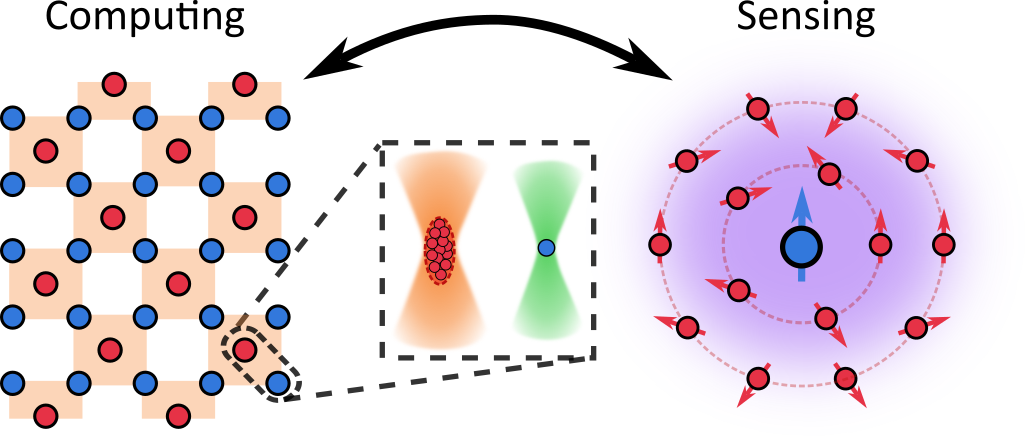Overview
We aim to create a dual-species tweezer array platform that enables atom-by-atom assembly of scalable quantum systems. By harnessing the complementary strengths of caesium and ytterbium, we will explore new architectures for quantum computing, sensing, and fundamental physics.
Why?
Learning to control quantum effects such as superposition and entanglement opens the door to transformative technologies like quantum computers and quantum sensors. Optical tweezer arrays offer exquisite control over individual quantum systems, trapping single atoms at ultracold temperatures where they can be perfectly isolated from the environment. This allows us to create long-lived superpositions of atomic states and, by exciting to Rydberg states, to engineer strong interactions that entangle them. This approach has already proven highly successful for realising programmable quantum systems for quantum computation, simulation and metrology.
Why two species?
Using two atomic species offers new capabilities. Single-species systems face challenges because all the atoms are identical, making it hard to perform certain operations like manipulating or measuring a subset of atoms without affecting its neighbours. By using two species — caesium and ytterbium in our case — we gain independent control, making the platform well-suited to applications where atoms must take on distinct roles, such as data and ancilla qubits in quantum error correction, or as matter and gauge fields in quantum simulators. This flexibility also opens up new opportunities for quantum sensing and improved state preparation.
How?
We cool and trap caesium and ytterbium atoms to temperatures close to absolute zero using laser light and magnetic fields in a magneto-optical trap (MOT). From there, the ultracold atoms are transferred into optical tweezer arrays, created by focusing a grid of tightly focused laser beams onto the atoms. Each tweezer traps a single atom, allowing for precise control.
By dynamically adjusting the position of these tweezers, we can arrange the atoms into any desired geometry for a given experiment. We then use precisely tuned laser pulses to prepare the atoms in well-defined quantum states and excite them to Rydberg states, where they exhibit strong, controllable interactions.
Combining this control with fast, high-fidelity measurements of the atoms’ quantum states, we aim to develop new methods for generating long-range quantum entanglement and explore how these entangled systems can be harnessed for future quantum technologies.
Team
Dr. Alex Guttridge (Principal Investigator)
Mr. Colin Hung (PhD Student)
Apply Now!
We are recruiting a PhD student for a joint NQCC–Durham studentship developing next-generation quantum computing and error-correction techniques with the DualQD platform.
If you are interested in joining the team or finding out more, please contact Dr. Alex Guttridge.
